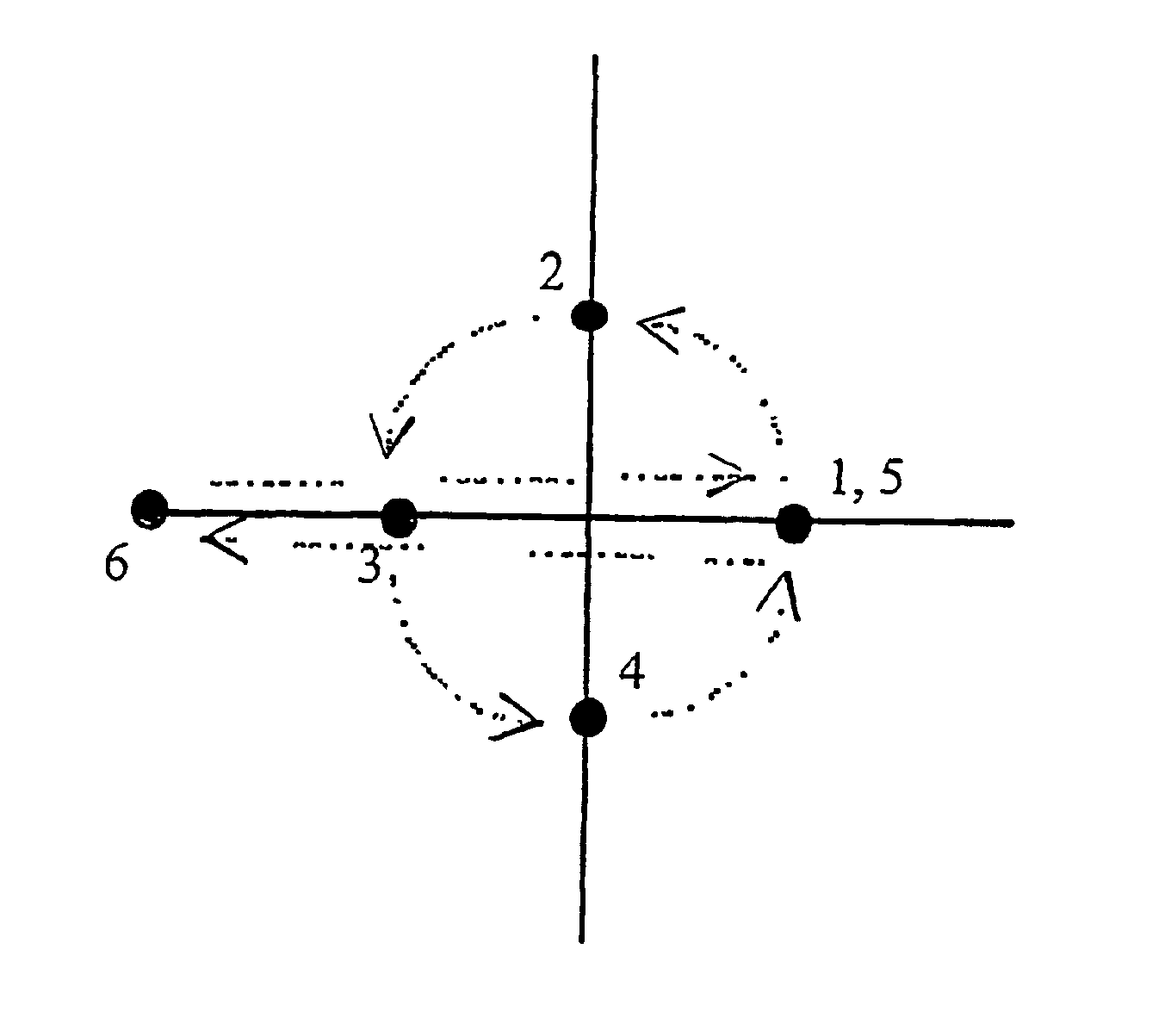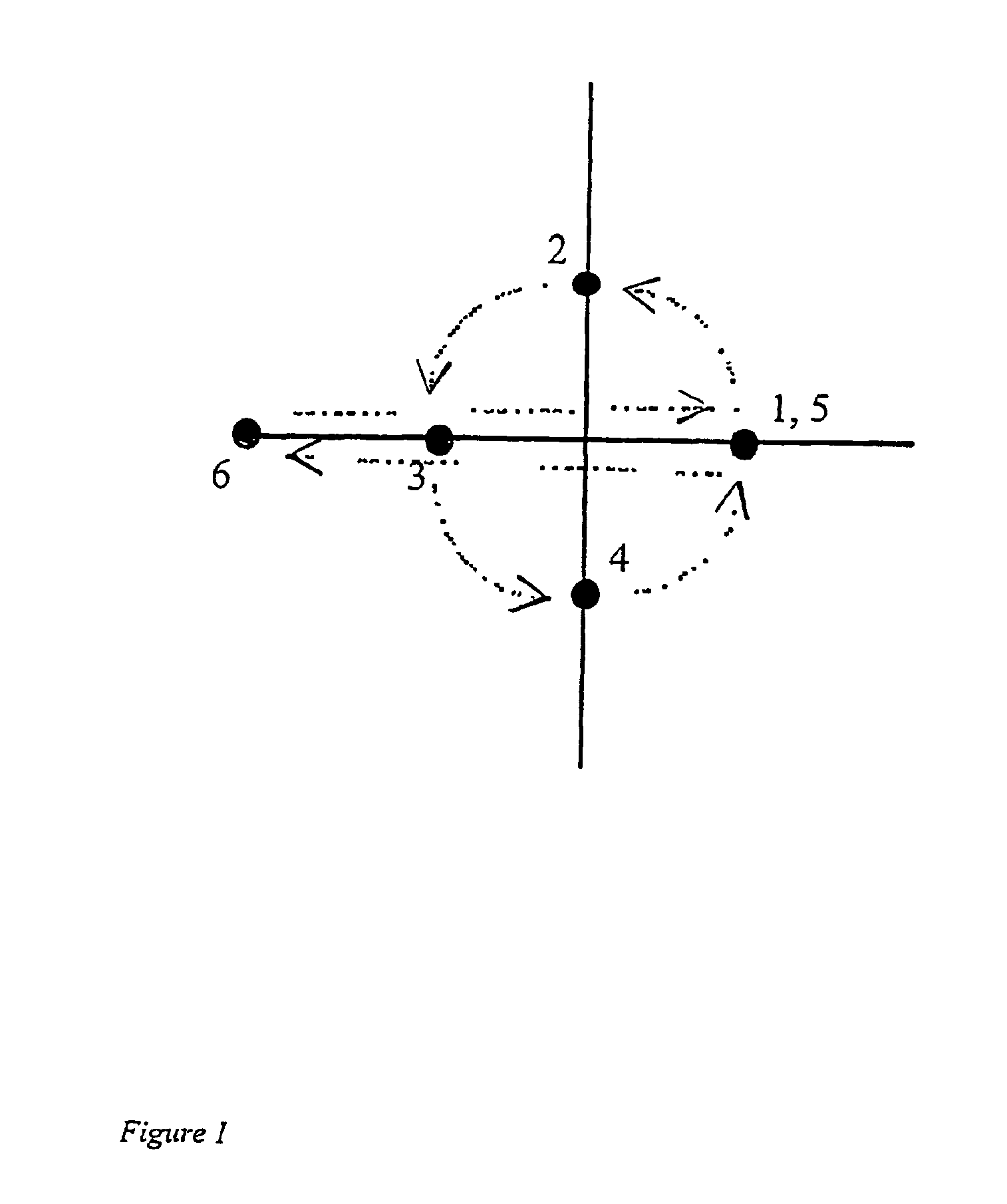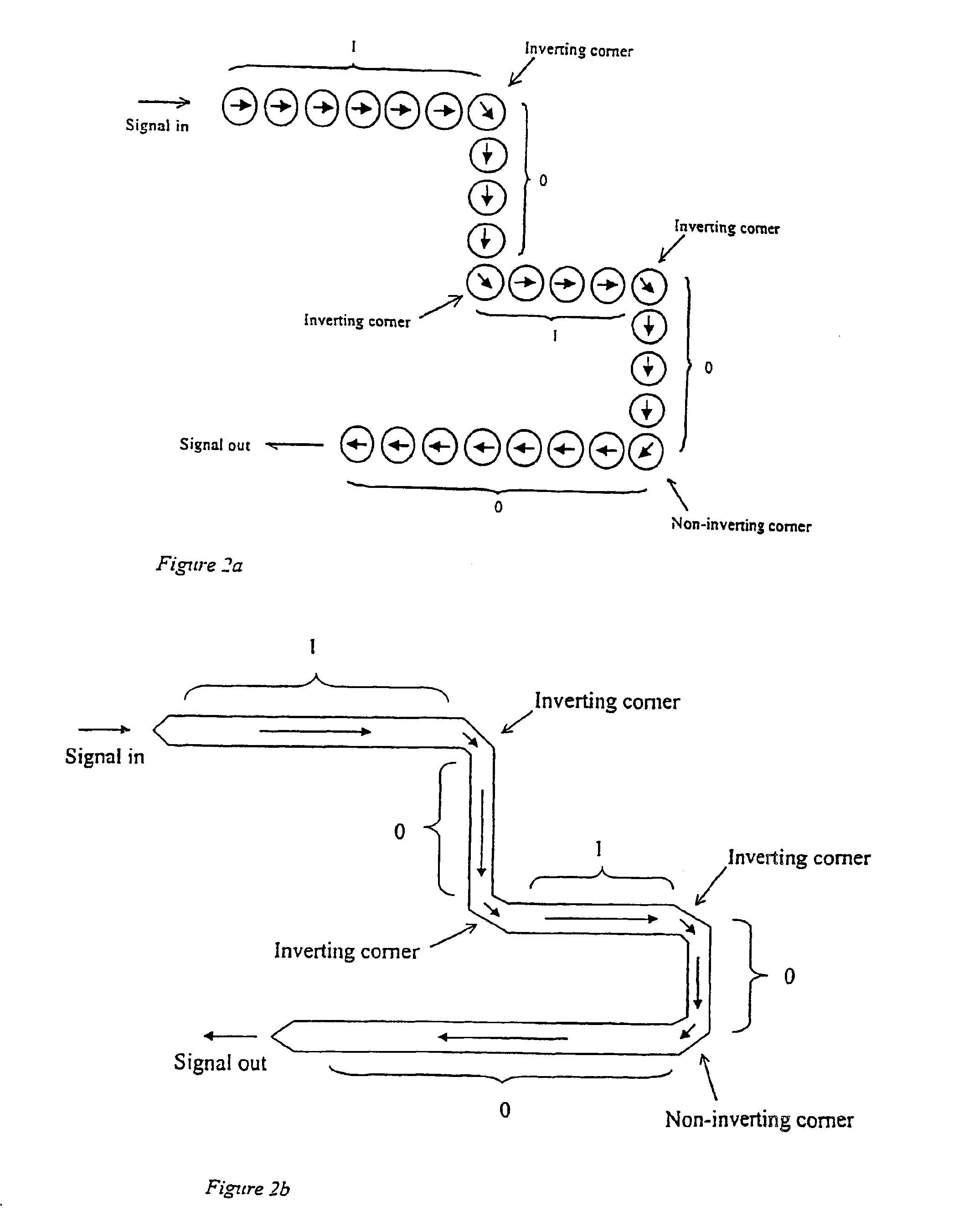Magnetic logic elements
a logic element and magnetic field technology, applied in the field of magnetic logic elements, can solve the problems of increasing the difficulty of exponential growth, increasing the difficulty of spontaneous creation, and increasing the difficulty of sustaining exponential growth, so as to achieve maximum gap and mitigate the above problems
- Summary
- Abstract
- Description
- Claims
- Application Information
AI Technical Summary
Benefits of technology
Problems solved by technology
Method used
Image
Examples
Embodiment Construction
">[0045]FIG. 4 shows a conduit used for carrying solitons in a straight line;
[0046]FIG. 5 shows a unidirectional interconnect (upper and lower) with a schematic graph of the soliton energy as it passes through the interconnect (centre);
[0047]FIG. 6 shows a correctly terminated conduit;
[0048]FIG. 7 shows a symmetric corner;
[0049]FIG. 8 shows an asymmetric corner;
[0050]FIG. 9 shows a two-phase fan-out allowing a signal to split to two signals of opposite phase;
[0051]FIG. 10 shows a one-phase fan-out allowing a signal to split to two signals of same phase;
[0052]FIG. 11 shows a cross-road, allowing two signal lines to cross each other in the same plane;
[0053]FIG. 12 shows an AND / OR gate architecture, arranged so that the gate will perform the AND function when the clock field sequence is as shown in FIG. 1;
[0054]FIG. 13 shows the AND / OR gate of FIG. 12 arranged in the reverse direction so that the gate will perform the OR function when the clock field sequence is as shown in FIG. 1;
[005...
PUM
 Login to View More
Login to View More Abstract
Description
Claims
Application Information
 Login to View More
Login to View More - R&D
- Intellectual Property
- Life Sciences
- Materials
- Tech Scout
- Unparalleled Data Quality
- Higher Quality Content
- 60% Fewer Hallucinations
Browse by: Latest US Patents, China's latest patents, Technical Efficacy Thesaurus, Application Domain, Technology Topic, Popular Technical Reports.
© 2025 PatSnap. All rights reserved.Legal|Privacy policy|Modern Slavery Act Transparency Statement|Sitemap|About US| Contact US: help@patsnap.com



